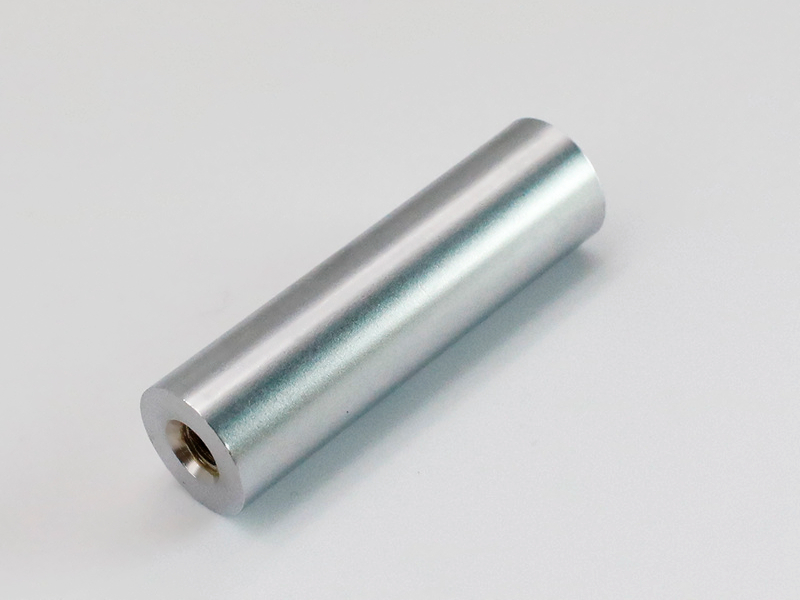Chromate Conversion Coating: The Key to Long-Lasting Aluminum Die Castings
Introduction
Aluminum die castings are prized for their lightweight, dimensional accuracy, and thermal conductivity. However, they are also vulnerable to surface corrosion and adhesion issues when left untreated, especially in humid or chemically aggressive environments. Chromate conversion coating, or chemical film or alodine treatment, is a widely used process that chemically passivates aluminum surfaces, forming a protective, corrosion-resistant oxide layer. Ideal for both standalone protection and paint/adhesive priming, this coating is essential for aerospace, automotive, medical, and electronics applications.
At Neway, chromate conversion is offered as part of our comprehensive post-processing lineup to ensure long-lasting, specification-compliant finishes for A380, A360, and other aluminum alloy castings.
What Is Chromate Conversion Coating?
Chromate conversion is a chemical treatment process where cast aluminum parts are immersed or sprayed with a solution containing hexavalent or trivalent chromium compounds. The solution reacts with the aluminum substrate to form an inert, tightly bonded oxide-chromium layer. Depending on the formulation used, this layer typically has a yellow, iridescent, or clear appearance.
Key Specifications and Standards
Standard | Description |
|---|---|
MIL-DTL-5541F | US military specification for chromate coatings on aluminum and its alloys |
ASTM B921 | Standard specification for non-electrolytically applied conversion coatings |
RoHS Compliance | Trivalent formulations meet EU environmental restrictions (Hexavalent is limited or phased out in many sectors) |
The resulting film thickness is generally between 0.3–1.0 µm and does not significantly alter dimensions, making it suitable for tight-tolerance parts.
Benefits of Chromate Conversion on Aluminum Die Castings
Property Enhanced | Performance Benefit | Application Impact |
|---|---|---|
Corrosion Resistance | Up to 168–336 hours salt spray (per ASTM B117) | Extends part life in marine, automotive, and outdoor use |
Paint/Adhesive Adhesion | Primer for powder coat, epoxy, and enamel | Ensures coating uniformity and prevents flaking |
Electrical Conductivity | Minimal resistance increase | Suitable for EMI shielding components |
Dimensional Integrity | Coating is non-build-up | Safe for precision-machined parts |
This coating is especially valuable for components exposed to condensation, salt spray, or industrial atmospheres where untreated aluminum would oxidize or discolor.
Application Process and Compatibility
Chromate conversion is typically applied through immersion, spray, or brush-on techniques, depending on part size and geometry. Key process steps include:
Cleaning/Degreasing: Removal of oils and debris
Deoxidizing/Etching: Surface activation for uniform coating reaction
Chromate Application: 30–90 seconds immersion or controlled spray deposition
Rinsing and Drying: Deionized water rinse to prevent spotting or streaking
This process is compatible with castings from A413, AlSi12, and AC4C, as well as machined components produced via CNC post-machining.
Chromate Types: Hexavalent vs. Trivalent
Type | Characteristics | Use Case |
|---|---|---|
Hexavalent (Cr⁶⁺) | Traditional formula, iridescent yellow finish, superior corrosion resistance | Aerospace, military (where allowed) |
Trivalent (Cr³⁺) | Environmentally compliant, clear or bluish tint, lower toxicity | Electronics, automotive, RoHS-compliant parts |
While hexavalent chromate provides stronger corrosion protection, trivalent options are increasingly used in response to environmental regulations such as RoHS, REACH, and ELV.
Industry Applications and Case Example
Chromate conversion is used across diverse sectors:
Aerospace: Electrical housings and control surfaces require corrosion protection without compromising electrical continuity
Automotive: Chassis, brackets, and heat sinks gain paint-ready surfaces and corrosion resistance
Medical Equipment: Non-powder-coated enclosures benefit from stable, biocompatible finishes
Electronics: Die cast housings for EMI shielding maintain conductivity while resisting oxidation
For example, an A380 control housing with chromate treatment exceeded 240 hours of salt spray exposure without corrosion, while maintaining <0.5 mΩ surface resistance—a critical factor for grounded shielding components.
Integration with Other Surface Finishing Processes
Chromate conversion is often combined with:
Powder Coating: Improves coating adhesion and prevents under film corrosion
Anodizing: May be used on select components with hybrid finishing needs
Electropolishing: Prepares high-end cosmetic parts before chemical film application
Masking & Selective Coating: Applied where electrical continuity or part interfacing is critical
As part of Neway’s die casting post-process solutions, chromate conversion is precisely controlled to meet both technical and aesthetic requirements.
FAQs
What is the typical salt spray resistance of chromate-coated aluminum castings?
Is chromate conversion RoHS-compliant?
Can chromate be applied after CNC machining?
How does chromate coating affect paint adhesion?
What is the difference between clear and yellow chromate finishes?

